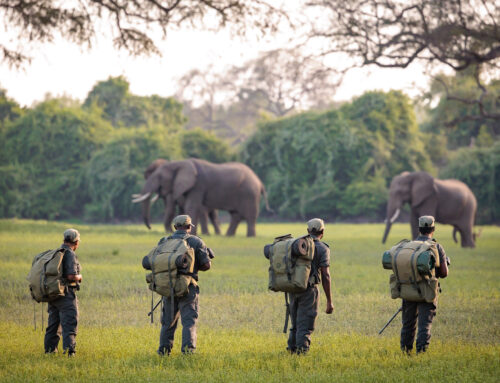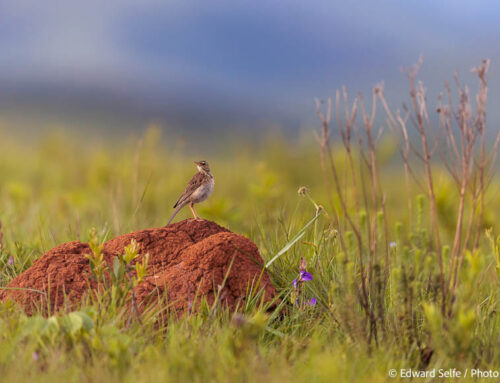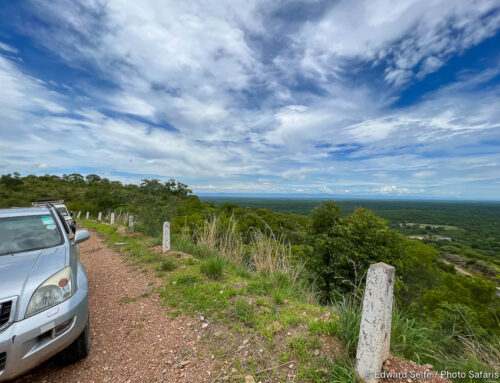We have known for some time that the greatest threat to the wild places on our Planet is the growth of the human population. As our numbers rise, we encroach into areas where we used not to tread, either to expand agricultural production, obtain natural resources or simply to build more houses. The news stories on this topic tend to be dominated by poachers targeting headline species such as elephant, rhino and pangolin, and certainly these acute threats are the fastest route to extinction for these species. But even if we control the upward trend in wildlife trafficking, we still need to address the slow but relentless encroachment of people on the habitats of these species. The loss of habitat is as likely to wipe out the elephant as is poaching, even though the process of extinction will be less dramatic.
This picture of African wildlife is pretty bleak. And it is a story that is repeated in south-east Asia where palm oil plantations are wiping out orangutan populations, and is seen again in the forests of the central Amazon where tree-felling is wiping out vast woodlands that are yet to be fully understood. It is made all the more puzzling when we consider that there is so much publicity about the damage that is being done to our world. We are well aware of the impact of our collective behaviour. Why is it proving so hard to address what is surely the greatest threat to the planet?
Of course, in brief, the problem is one of collective action. While people in the developed world with the resources to reduce their impact on the environment, residents of developing nations are less able to make such altruistic decisions when faced with the hardships of life. Governments in need of funds are not able or willing to drive hard bargains with large agricultural and logging businesses in order to protect their nation’s natural resources. Why this is remains beyond the scope of this article, but it is clear how it comes about.
NGOs have done outstanding work raising awareness of the problems facing our planet and tackling them in many areas; but, judging by their continued appeals for help, they are not stemming the tide as they would like. Charitable organisations play a crucial role in environmental protection, but they will always struggle to compete against the efficiency and motivation of free-market business. In fact, we rely on the profit-hungry business model to make the world work; suppliers must to overcome any obstacle to get their products and services to the marketplace. If they don’t, we won’t buy them and their businesses suffer. In this way, the pursuit of profit drives businesses to navigate through challenges and “find a way”.
Social enterprises may offer a solution to some of the world’s environmental problems. They seek to make profit through the production of a social “good”, an output that benefits a large of people, beyond those immediately involved in the transaction. As “for-profit” organisations, they are able to harness the same commercial motivation than makes business work, and overcome the snags that held back the NGOs. The crucial factor required for social enterprises to work is that these social goods have a marketable value.
The Luangwa Valley is home to one of the richest wildlife ecosystems remaining on the planet. But Zambia also has a very fast-growing population and faces some of the fastest degradation of natural resources of any nation on the continent. Conservation charities, such as Conservation South Luangwa, provide essential support to the Department of National Parks & Wildlife in sourcing, funding and implementing anti-poaching operations in the form of patrols, intelligence-gathering, road-blocks and community outreach. However, habitat protection is outside their capabilities, and must be left to others, particularly when there are priority targets to meet, such as reductions in elephant poaching.
In the past, the protection of wild natural habitat has been implemented through patrols and law enforcement, with little benefit to local people (apart from avoiding prosecution). With the advent and establishment of the carbon credit market, a solution has emerged for the protection of habitat for wildlife. Social enterprise businesses are now able to form alliances with landowners and generate profit through the protection of forests.
BioCarbon Partners (BCP) is one such enterprise, which has been based in the Luangwa Valley for the last 5 years. Their manifesto is to protect forest habitat from human encroachment and preserve it for wildlife’s benefit. Their strategy? Making trees valuable to communites. Through partnerships with local landowners – in this case, the traditional Chiefs – they set aside forest land and ensure its protection. By calculating the likelihood that these same trees would have been cut down without their intervention, BCP generate carbon credits for each year that these trees remain standing. These credits can be sold on world carbon markets, and hold particular value because the trees protected also form habitat for some of Africa’s headline species.
In return for agreeing to set-aside forest as a reserve, BCP reinvests some of the funds raised into local communities, to develop wells, build clinics and provide education in forest management. They also fund the patrols and resource protection networks required to ensure that the agreements made are being kept. This model is an improvement on similar profit-reinvestment models used by tourism businesses, because the revenue raising mechanism is based on the protection of a natural resource; it is in everyone’s interests to keep the agreement.
It seems like a perfect solution to a long-standing problem but, of course, things are rarely as simple as that. Reaching agreements with local Chiefs about which areas of land should be protected, and then broadcasting that information to local people who are not well-versed in maps is challenging. As is explaining how trees that remain standing can have value on a global market that exists only in concept. Furthermore, carbon credit organisations must have their work properly verified against stringent international benchmarks.
One of the most common criticisms of carbon credit programs is to question how people will cook, build and survive if they cannot make us of their local trees. Of course, it is totally unrealistic to think that people can adapt overnight to a life without forest products. So BCP, like other similar programs in South America and elsewhere, offer land-use models that allow for sustainable charcoal and timber production on some areas of the land as part of the agreement. By training people in how to produce these valuable resources in a sustainable way, they reduce the pressure on forest stocks and create a business at the same time. Excess charcoal, timber and poles are sold to other communities.
The economic activity that these offshoot projects create will draw people into carbon-credit zones from surrounding areas. Preventing incomers from breaching the agreements is certainly a concern, but there is considerable collective benefit of doing so. Chiefs in Zambia still have the authority to permit or deny people from moving into their Chiefdoms, and it may be in their interests to do so if immigration threatens the project. While this may risk engendering antagonism in the communities – where some communities benefit and others don’t – previous solutions to resource protection were patrols, prosecution and punitive measures such fines and imprisonment. Where the world’s dwindling natural resources are at stake, robust measures may be justified.
BCP are breaking new ground in Zambia. They are the first business (rather than NGO) to receive start-up funding from USAID (the US Governments’s Agency for International Development) in carbon-generation; they are also the first to confront the challenge of forest protection in the Luangwa at a scale that reflects the size of the region and the magnitude of the problem; in addition, they are one of the first organisations to achieve project verification against both the international benchmarks. Finally, they are unusual in being a for-profit organisation which is driven by the quest for financial success. Far from being a mark against them, this indicates that they will navigate challenges and “find a way” in situations that might overwhelm an NGO. Because their output is effective forest protection in harmony with local communities, their success brings benefits to local and eventually global populations as well as their shareholders.
The views and opinions expressed in this article are those of the author. The article was written independently from BCP and is not sponsored by them. The author has no financial interest in BCP….but a significant personal and emotional interest in the future of the forest areas that are being protected.




